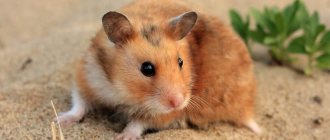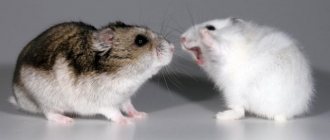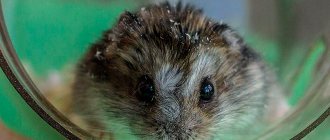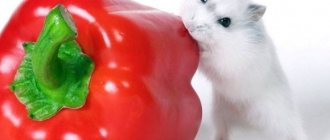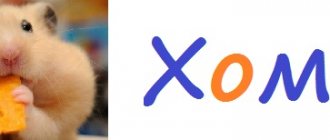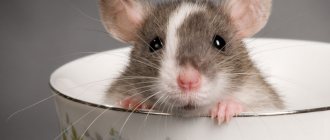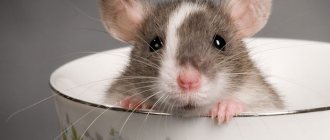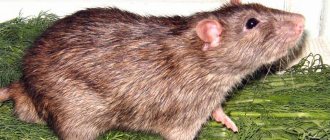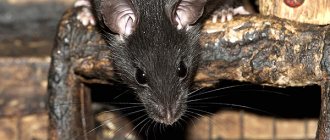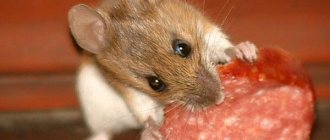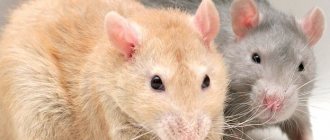- Wild animals
- >>
- Mammals
Forest dormouse are mammals from the order of rodents. These cute little animals are so small that adults easily fit in the palm of a person. The long fluffy tail that dormouse can boast of gives them a resemblance to a squirrel, and the contrasting color of the fur, ranging from yellowish-orange to grey, olive color, gives the animal an elegant look.
Why is it worth buying a rodent for your home?
Any, even the most unpretentious pets at first glance require care: proper nutrition, timely medical care, provision of the “correct” living conditions, education and training. The only question is how much time and finances have to be spent on providing appropriate care.
The dog needs frequent walks. And walking with four-legged pets is not only a pleasant pastime in the fresh air, but also constant washing of paws, examinations for ticks, treatment for minor cuts and other injuries.
In addition, dogs require mandatory training. Yes, yes, even small decorative dogs taken into the home solely “for pleasure” should know the boundaries of what is acceptable and have a clear idea of what is allowed and what is not allowed.
Cats, unlike dogs, do not require obligatory walking and, in general, behave more independently. However, at the same time, many pet owners note the waywardness or even “capriciousness” of their pets.
If a dog is a pack animal and therefore requires constant communication, then cats most often behave like loners. Yes, the cat can climb onto your lap or “ask” for attention, but he will only do this when he wants. Cats carefully respect their personal boundaries. The scars on the hands of their owners are further confirmation of this.
Parrots and other feathered pets do not require as much space as cats and dogs. However, they need almost the same amount of attention. Parrots are sociable guys, which means that they definitely need an “interlocutor.” If you don't have time to play with your pet, you will have to get two birds at once - but in this case you may turn out to be a “third wheel” for them.
The fish are too “asocial” and require special care. Aquarium keeping is a serious hobby, often expensive and requiring certain skills. Before acquiring a “real” aquarium, a beginner will have to get his hands on less demanding pets.
- Top 7 aquarium fish for beginners
Do you dream of aquarium fish, but are you afraid of not being able to cope? Let's talk about the easiest types and breeds to care for.
Turtles , both waterfowl and land ones, require special conditions of detention. Correct levels of humidity and air temperature, absence of drafts, a certain ventilation regime - ensuring all this may not be as simple as it seems at first glance.
At the same time, domestic rodents do not require as much communication as dogs, do not behave as capricious as cats, do not make noise like parrots, and do not require special conditions like fish or turtles.
Do not think that the list of domestic rodents is limited to hamsters and guinea pigs. In reality there are many more. Let's talk about the most popular ones.
Large rodents
Chinchilla
Chinchilla (lat. Chinchilla) belongs to the order Rodents, suborder Porcupines, superfamily Chinchilla-shaped, family Chinchillaidae, genus Chinchilla.
Chinchillas have a round head and a short neck. The body is covered with thick soft hair, and hard hairs grow on the tail. The body length is 22-38 cm, and the tail grows 10-17 cm long. The weight of a chinchilla reaches 700-800 grams, while females are larger and heavier than males.
At night, chinchillas can easily navigate thanks to their huge eyes, which have vertical pupils. The whiskers of mammals grow up to 10 centimeters in length. Chinchilla ears are round in shape and have a length of 5-6 cm. In the ears there is a special membrane with which the chinchilla closes its ears when taking a sand bath.
The chinchilla's skeleton can be compressed in a vertical plane, so the animals can crawl into the smallest crevices. The hind legs of chinchillas are four-toed, and the front legs have 5 toes. The hind limbs are very strong and twice as long as the front ones, which allows mammals to jump high.
The life expectancy of a chinchilla reaches 20 years.
A couple of centuries ago, chinchillas were on the verge of extinction - they were destroyed because of their very valuable fur, but gradually the situation changed for the better for the animal and from the status of a hunting trophy, this rodent migrated into our homes to the status of a pet and everyone's favorite.
But in order for the animal to feel comfortable, healthy and cheerful, it is worth knowing how to properly feed it, what to feed it and is it possible to breed it at home?
Jerzy
The common hedgehog is a very famous mammal, widespread throughout Europe and even on some islands. Its appearance and lifestyle sometimes attract animal lovers who keep a hedgehog as a pet.
It is difficult to confuse a hedgehog with someone else: the entire back of the animal is densely covered with sharp short needles of black-gray color, the length of which is usually 2.5-3 centimeters. The needles stick out in different directions to cause maximum damage to enemies and provide a high degree of protection. The hedgehog's total body length ranges from 20 to 30 centimeters, and it also has a short tail - about 2-3 centimeters.
The weight of an adult animal varies from 600 grams to 1 kg; on the head of the hedgehog there is a long, wet black nose extended forward. It has sharp teeth, the number of which is greater on the upper jaw than on the lower jaw - 20 and 16, respectively.
The hedgehog has four short legs, each with 5 toes and claws. The front legs are 1.5-4 cm shorter than the hind legs. This animal has dense gray fur growing on its belly and between its spines. The needles themselves grow at the speed of wool, have a hollow structure inside and grow in numbers from 4 to 6 thousand pieces.
Rabbits
The decorative rabbit is a very cute creature. First of all, when getting this furry pet, you need to remember that this is not just a beautiful soft toy, but a living creature that needs constant care and attention.
Decorative dwarf rabbits are very cute and funny animals that love communication and attention. Those who got such a pet are convinced that communicating with him brings a lot of joy and good emotions. Caring for dwarf rabbits is easy and more cost effective than caring for a dog or cat.
Rabbits love to walk on grass on lawns, so be sure to purchase a collar and leash. Walking does not need to be done every day; the rabbit masters the tray perfectly and is not capricious. This pet is light and compact, so you can take it with you in a cage to the country house or on other trips. Even a child can carry the cage. But remember that this animal is very sociable and can become stressed from inattention. If it is necessary to leave, the animal can be entrusted to relatives or friends, as it easily tolerates a change of habitat.
Hares
To the surprise of many skeptics, hares are increasingly gaining a place next to people in their homes. With an average lifespan of 5 to 15 years, hares are very sociable, active and cute creatures. It's impossible not to get attached to the big-eared cutie.
There are various reasons why hares have evolved from being a simple source of meat to being one of the best pets in recent years. Here are some of them:
- They are very sociable creatures that do not require any special training;
- They are very playful and funny;
- Being very sociable creatures, they need constant interaction with people and other hares;
- They are willing to play with people and other animals outside of their cage every day.
If you want to have a bunny, then you should know that a lot of work will await you. Along with the arrival of a pet into your home, you have a huge responsibility for it.
Marmots
The marmot is a mammal. Belongs to the order of rodents from the squirrel family. The most common steppe species is also called boibak.
In nature, it lives in the steppe and forest-steppe areas, but also takes root well in captivity. Requires increased attention, but quickly becomes attached to its owners. It is considered the most intelligent of the group of rodents that have adapted to home conditions. Each marmot has a special character and temperament.
Marmots are most often small in size. But among rodents, this is one of the largest species; an adult is about the size of a cat. They can weigh from 5 to 10 kg, with a height of 40 to 50 cm. They wear a fluffy fur coat of a sandy or brownish-reddish hue. They are born without hair and blind, first feed on their mother's milk, then switch to grass.
Gophers
The gopher is an animal of the chordate type, class mammals, order rodents, family squirrels, genus gophers (lat. Spermophilus or Citellus). The Russian word “suslik” comes from the Old Church Slavonic “susati”, which means “to hiss”.
The average body length of an adult animal is 15-25 cm. Individuals of some large gophers grow up to 40 cm, with males always larger and heavier than females. The weight of the gopher ranges from 200 grams to 1.5 kg.
Pet lovers often try to keep these cute-looking gophers indoors. Despite their pleasant appearance, gophers are not suitable for keeping at home. The possibilities of domestication and human contact with it are quite limited. The smell of the excretions of these animals is quite noticeable, which makes keeping them in an apartment difficult.
In the living corners of young naturalists or in scientific institutions, keeping gophers can be of interest, especially if there are observation and experimental programs. They are used primarily as laboratory animals. Thin-toed ground squirrels differ for the better from other species that are poorly accustomed to human society.
Syrian (golden) hamster
Syrian, also known as golden, or Western Asian hamsters are small animals with a length of 13 to 14 cm, of which approximately 1.5 cm is in the tail. Weight – 100-125 g. They are omnivores, in natural conditions they feed on seeds, nuts and some insects (ants, flies, wasps, cockroaches). In captivity they can live up to 3-4 years. The color can be golden, white, black, silver or brown.
A solitary animal that does not require a partner for communication, but easily finds a common language with its owner.
Mouse-like hamster
Mouse-like hamster.
The mouse-like rodent can live in rock crevices in the wild. When jumping, it reaches 30 cm from the ground when it senses danger. Small groups gather in one nest, where they hide from the cold and predators.
The diet consists of seeds, flowers, leaves, animal feed, insects, and carrion. In captivity, they are able to reproduce at any time of the year, in nature from March to December. Life expectancy is more than 9 years at home, in the natural environment about 2 years.
Djungarian hamster
A miniature rodent up to 10 cm long and weighing up to 65 g. Life expectancy is 10-12 months in the wild, and about 2-2.5 years in captivity (some individuals live up to four years). There are several color options - brown-gray (standard), gray-bluish (sapphire), matte white with gray intervals (pearl), red-cream (mandarin).
A distinctive feature is a dark strip of fur along the spine. It is curious that in winter the animals molt, and their fur becomes almost completely white.
They get along well in the same cage with representatives of their species.
Origin of the species and description
Photo: Forest Dormouse
The dormouse family has 28 species and reaches 9 genera. In Europe, the distribution area is confined to the oak area. In Asia and Transcaucasia, the dormouse lives in forests of various types. The western border of the habitat is the northern slope of the Alps. In the region of Southern Europe, these animals are common on the Balkan Peninsula and partly in Greece. And on the Apennine Peninsula, animals live only in the Calabrian Mountains. While dormouse inhabits Eastern Europe almost completely, with the exception of northern Poland, and in Ukraine it cannot be found in the Crimea and the Black Sea regions.
Distributed throughout the territory of the Republic of Belarus. Small populations are found in Asia Minor, northern Pakistan, Iran, Turkmenistan, western China, and northern Afghanistan. The eastern border of the species’ habitat is the western slope of the Mongolian Altai.
On the territory of the Russian Federation, forest dormouse are found in the Pskov, Novgorod, and Tver regions, as well as in the north-west of the Kirov region and the south-west of the Volga region.
In the European part of Russia, the border of the range runs along the right bank of the Don River. Rodents are found in the North Caucasus from the Kuban River basin and further south, covering almost the entire Caucasus region. Found in the forests of Central Asia, Southern Altai, and Eastern Kazakhstan. The dormouse can climb up to 3000 m into the mountains, even reaching the rocky belt.
Chinese hamster
Chinese hamsters differ from their relatives from the Hamster family by their more elongated body proportions.
Young individuals are not very flexible, but if the animal is often communicated with, it very quickly gets used to being handled and even becomes attached to its owners. At the same time, Chinese hamsters do not get along well with their relatives. This is especially true for males, who have a habit of constantly entering into conflict due to the fact that they cannot divide the territory.
There are three types of color: gray (the so-called wild type), spotted white, white (a rather rare variety). They are known for their speed and resourcefulness, so such pets should be kept in a cage with a small distance between the bars. Some owners even set up a special aquarium for them.
Clawed (Mongolian) gerbil
The gerbil looks like a mouse with a tassel on its tail. They are noticeably different in size from hamsters. Male gerbils can reach a length of 20 cm. It is curious that in captivity, males behave more friendly than females, while females are more active.
In the wild, gerbils live in groups consisting of one male and 2-3 females. Females and males care for the cubs together, however, as soon as the babies grow up, the parents “drive” them away from their territory.
On a note! The best food for gerbils is specially formulated mixtures for rodents. Cabbage, peas, potatoes, sour or too sweet fruits are strictly prohibited. Sometimes protein is added to the diet (egg whites, beetle larvae).
Rodent control
Regardless of what pests have settled in your summer cottage, you need to know how to get rid of rodents in order to obtain and preserve the harvest. To combat all types of rodents, traditional mousetraps, as well as glue-based traps, are used. Glue traps can be purchased ready-made or you can purchase special non-toxic glue to create them, which retains its properties for two weeks. Both ready-made traps and glue for them are produced by the MediLIS company.
If there are a lot of rodents in the country, traps alone will not do. It is better to use poison baits. These can be ready-made baits with an attractive smell and taste for rodents, containing poison. Or an additive for making your own baits. It is mixed, for example, into a boiled egg or added to sugar syrup. The bait and ingredients for its preparation, called Mediret, are also produced and sold by the company MediLIS.
Decorative mouse
Decorative mice are, in essence, distant relatives of the well-known house mice (yes, the same ones that have the habit of settling not far from human homes and often “peeping into the light” of country houses in the autumn-winter period).
The only difference between such mice and their wild relatives is their colors - they are not found in nature.
Mice are social animals, so it is best to keep them in pairs or groups consisting of only females. Males will almost certainly not be able to live with each other.
Domesticated rat
Unlike their wild ancestors, modern domesticated rats are practically not afraid of people and willingly make contact. These are smart animals with a calm and “non-conflict” character.
Like any social creatures, they require constant communication, so in the absence of a “companion” they may begin to experience psychological stress. However, as practice shows, rats very quickly find a common language with humans and, if the latter pays enough attention to the animal, it becomes a faithful and devoted pet.
Enemies of the forest dormouse in nature
The main enemies of the forest dormouse are owls. These birds of prey hunt exclusively at night, attacking and capturing small rodents with their sharp talons.
Among birds, hawks and kites are also dangerous. On forest roads, small animals should avoid encounters with foxes, stoats, dogs and cats.
The greatest competition in terms of nutrition comes from gray rats. Extermination of the rodent by humans, trapping, and the use of pesticides and poisons on agricultural plantations led to the inclusion of the forest dormouse in the Red Book.
Guinea pig
In terms of size, guinea pigs are noticeably larger than other domestic rodents. Body length can reach 25-35 cm, weight - 1-1.5 kg (for males) and 0.8-1.2 kg (for females).
Unlike mice and hamsters, which have an average lifespan of 2-3 years, guinea pigs quite often live to a “venerable” 5-7, or even 9 years. They are famous for their flexible nature and peacefulness. It is quite difficult to “irritate” this animal, which is perhaps why they are often taken as pets to families with children.
There are a large number of different breeds of guinea pigs, which differ from each other in length, structure and coat color. When purchasing such an animal for your family, first check the nutritional recommendations, since the menu may vary depending on the breed. For example, hairless guinea pigs are recommended to add more grain to their food, because... they have to spend a lot of energy to maintain the desired body temperature. At the same time, “regular” guinea pigs are given grain in limited quantities, since the high starch content in this product can lead to obesity.
Small rodents
Hamsters
Hamsters are very popular pet rodents. But it is worth keeping in mind that this small and cute animal is a nocturnal animal and, moreover, quite aggressive. During the day, the hamster will sleep soundly and will not want to play with you. And if you decide to add a relative to it, then violent showdowns, up to the death of one of the animals, will be ensured.
To tame a hamster, you need to show persistence and patience. Otherwise, this cute animal may show its teeth and bite its owner painfully.
The hamster will need a durable wire cage, equipped with a house, wheel, and tunnels of your choice. If you want to let your pet run around the apartment, then use a walking ball, otherwise the hamster may climb into a hard-to-reach place, chew wiring or other things.
This domestic rodent is not very picky when it comes to food. The main thing is to adhere to some rules. You can find out what to feed your hamster here. The hamster eats little, takes up little space, and requires minimal attention. This pet rodent will thrive alone in its cage. The main thing is not to forget to feed him and change his water on time. The only drawback of these animals is their short life expectancy, on average 2-3 years.
The most common representatives of hamsters are the dwarf hamster and the Syrian hamster. Read about what types of domestic hamsters exist in our article.
Mice
For many centuries, these small creatures have lived next to humans. And, the attitude towards such rodents, and we will talk about them, is very ambiguous. On the one hand, rodents harm and spoil products, and on the other hand, imagine at least one medical and research laboratory in which laboratory rats and mice would not live. And, since these creatures can live in laboratories, then why can’t they live in our homes as pets?
Relatives of ordinary house mice today are decorative mice. It’s just that if the first ones are destroyed, then the second ones are groomed and tender. Of course, such a house mouse is an excellent candidate for the role of a pet if you have limited living space and free time. But who should not have decorative mice are those who are pathologically afraid of these creatures, or cannot stand the specific mouse smell (no matter how you clean and wash the cage, the smell will still be in the air), as well as those who suffer allergy to rodents.
What are the peculiarities of keeping such pet mice, what to feed such rodents, and how to care for them? We will try to answer all these questions in our article.
Rats
Most of us shudder at the words “house rats”: we immediately think of rather large rodent pests that can not only cause damage to property, but also infect them with diseases.
But in fact, these animals can be very interesting pets.
There are different breeds of rats, but absolutely all of them are distinguished by their amazing intelligence, speed of learning and even good training abilities. Let's get to know them from this side. And at the same time we will learn how to care for a pet rat.
Guinea pigs
Guinea pig (from Latin cavia porcellus - small pig) is a domesticated rodent of the pig family, which belongs to the genus pig. The animal is a small, usually up to one and a half kilograms, plump animal with hanging ears, large protruding eyes and a wide muzzle. The enormous popularity of the rodent is due to its attractive appearance, unpretentiousness, good-natured and trusting character and peaceful temperament. The Guinea pig is the safest pet for children of primary preschool age.
The rodent received its name, which at first sounded like “overseas pig,” in Russia precisely because it arrived from overseas, and the shape of the animal’s head resembled the head of a pig. The animal is also called kewi, cavey or Guinea pig.
Squirrels
The common squirrel, or otherwise known as the squirrel, belongs to rodents from the squirrel family. There are about 15 species of animal that live in wildlife in forests.
The animal is small in size, nimble and easy to climb. Its weight is approximately a quarter kg, length - from 20 to 28 cm. The longest part - the tail - is equal to a third of the entire body.
Veksha changes her fur clothes in the off-season. In winter, its fur becomes fluffier and softer, and in summer it becomes shorter and tougher.
The squirrel is one of the most beautiful forest inhabitants that humans have managed to tame and domesticate. An example of grace and correct proportions. The owner of a fluffy tail, shiny black eyes and fluffy tassels on the ears.
This is a spontaneous and active animal, and, in addition, unpretentious in its content.
Chipmunks
Everyone knows the cartoon “Chip and Dale Rescue Rangers” and is moved by its main characters, but you can give a child a great gift by buying real live chipmunks as pets.
The chipmunk adapts well to life in captivity; it is unpretentious in both care and food.
The only difference from the cartoon characters is that they do not get along well with each other from autumn to spring, and each animal will need an individual cage.
Adult size varies depending on the specific species. The smallest representative is 5 centimeters in length and weighs 30 grams, and the largest is 15 centimeters in length and about 130 grams in weight. A distinctive feature of all chipmunks is the longitudinal stripes on the back, which alternate in color. Usually there are 9 of them, of which 5 are dark and 4 are light.
Degu
Degus are small animals that look like a jerboa. Along with other exotics, they are rapidly gaining popularity among those who want to have an unusual pet.
Degu is a small South American rodent. Other common names for this animal include two: bush rat and Chilean squirrel. The animal is highly active with a relatively small size. An adult reaches up to 30 cm in length, while weighing only 200-300 g. In nature, degus come in only two colors: brown-yellow or chestnut-gray.
The fur of the Chilean squirrel is hard and dense. Like most rodents, these animals have 8 pairs of teeth that grow throughout their lives. Degus can adapt to living at home if they are provided with the appropriate conditions. With proper care and nutrition, such a pet can live up to 6-8 years.
Gerbil
When choosing a pet, people often stop near cages with gerbils. These rodents have wonderful personalities. They are clean, easy to tame, trainable and look very cute.
Their curiosity and friendliness will delight you every day. Just by looking at the photo of a gerbil, all doubts about the decision to have one as a pet disappear.
Today there are more than 100 species of these rodents. It is worth noting that only one of them was tamed. This is a Mongolian gerbil.
In their natural environment, these mice live in families. Therefore, if you decide to have this baby at home, you need to take a couple of individuals. Living alone could have a negative impact on her health.
The size of a gerbil mouse varies from 5 to 20 cm. It weighs from 15 to 200 grams. The main distinguishing feature is the tail. It is covered with fluff along its entire length, and the tip is decorated with a tassel. The coat color is sand.
Sonya
Under natural conditions, the rodent dormouse prefers wooded areas, preferably oak, wild fruit trees or beech. He feeds on the fruits of these trees, and makes a cozy home in their hollows. It does not evoke sympathy among southern farmers, as it harms the grape industry.
There are several types of them, but they are divided into two groups - terrestrial and arboreal. The arboreal ones resemble small squirrels, while the terrestrial ones are more like mice. All species adapt well to life in captivity, but there is an important requirement - frequent cleaning of the cage is necessary. Although these animals are small, they quickly pollute the home, causing unpleasant odors.
Jerboa
Jerboas are a group of mouse-like rodents, of which more than 25 species are known. Their body shape, ease of maintenance and small size make them attractive as pets to many animal lovers.
This animal has a small body size, a fairly long tail with a brush at the end, and large hind legs. Thanks to its fur, the jerboa is protected from various temperature changes typical of desert areas.
The animal, in comparison with other representatives of rodents, has a fairly large size of 25-26 cm and a tail, the length of which is 30 cm. The fur on the back has a red or brownish-gray tint, on the cheeks the color is slightly lighter, the neck and belly are white. The head of the jerboa is round in shape with oval ears and fairly large eyes. He also has small front legs and strong hind legs. The weight of the animal, depending on its type, can reach 250-300 grams.
In natural conditions, jerboas move a lot, and, consequently, the lack of movement and a small amount of free space can develop in a domestic jerboa such a disease as physical inactivity, which will lead to its early death. To avoid this outcome, you should provide your pet with a large enclosure, the size of which will be at least 0.5 m.
Chinchilla
Chinchillas are active animals, which means that they need spacious and, preferably, multi-level cages where the rodent can freely perform its “acrobatic studies”. Separately, it is worth mentioning the care of your pet’s fur. A chinchilla should be given a so-called dust bath several times a week. To do this, sand is poured into a relatively deep container, for example, a deep cat litter box, or better yet, a special powder in which the animal falls out, cleaning itself.
Young chinchillas very quickly get used to a person, but not so much as to allow him to constantly carry them in his arms. He is unlikely to make a companion animal.
African dormouse
It is a rare pet that can compete in agility and agility with the African dormouse. This animal is considered very active and restless even by rodent standards, so you can keep it in an apartment only if you can provide it with complete safety. There are known cases when animals ran away even from seemingly completely impregnable cages, hiding from their owners throughout the apartment for days.
Therefore, African dormice are often recommended to be kept in a terrarium with a well-closed lid. The diet of these animals is noticeably different from the menu of other rodents. While hamsters, mice and guinea pigs base their menu on plant foods, African dormouse prefer food of animal origin - small insects, mealworms, eggs. However, plant foods cannot be completely excluded from the diet.
Nutrition of the forest dormouse
The predominantly nocturnal lifestyle, the presence of excellent hearing, as well as the metabolic characteristics of the inhabitant of deciduous forests determine the wide composition of the diet.
Dormice are absolutely unpretentious in food. What does the forest dormouse eat:
- The consumption of a variety of cereal crops is typical for this representative of rodents, as well as for all representatives of the order.
- The fluffy animal is not at all averse to eating the seeds and fruits of berries, fruit trees, and berry bushes (raspberries, hawthorns, blackberries, rose hips). It is plant foods that become the main source of protein and vitamins for dormouse.
- In hotter regions, animals eat a variety of fruits.
- At the beginning of spring, when there is a lack of food sources, the diet is replenished with roots, young shoots of plants, and the bark of young trees.
They do not avoid dormice and animal food, actively consuming insects, larvae, and mollusks. Forest inhabitants can destroy bird nests, destroy eggs, eat young chicks and even small lizards.
Degu (Chilean squirrel, bush rat)
Relatively large rodents with a body length of 9 to 12 cm, of which about 7-9 cm “goes” to the tail. These are very social animals that get along well with each other, but it is still not recommended to breed them in large groups, since the rodent needs a lot of space for full development. The best option is to house a couple of degus of the same sex - this way the pets won’t get bored, and you won’t have to look for owners for numerous offspring.
Unlike guinea pigs, degus do not like to be treated freely and can bite strongly, therefore, when choosing a rodent for a family with small children, you should give preference to a more peaceful and phlegmatic animal.
If you have long wanted to have a pet, but doubt that you will be able to pay enough attention to it, start with a rodent. So, within a few months after purchasing the animal, you will understand whether your lifestyle allows you to take responsibility for a more “demanding” pet.
Lifestyle of the forest dormouse
Dormouses are exclusively nocturnal. They prefer to move only on the ground, but some subspecies prefer the arboreal-terrestrial nature of movement. It is not typical for the forest dormouse to form a strong family and live in groups. Males find a pair only during the mating season, subsequently leading a solitary lifestyle.
Throughout the summer-autumn period, dormice actively gain weight, accumulating subcutaneous fat. With the onset of the first cold weather, furry rodents hibernate. An important feature of metabolism - the ability to reduce body temperature to 4 degrees during sleep - is decisive in the seasonal hibernation of the dormouse.
The character and behavior of the animals shows a unique tendency to maintain cleanliness. Dormouses can spend several hours thoroughly cleaning their fur from debris, debris, and dirt. Today, the question of how long the forest dormouse lives has been finally resolved - up to 6 years.
